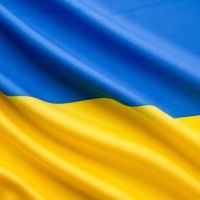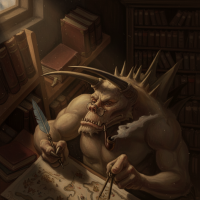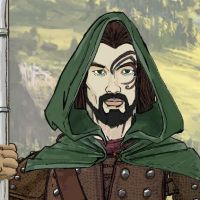Greyhawk - CC2 to CC3+ Conversion
 Shessar
🖼️ 34 images Mapmaker
Shessar
🖼️ 34 images Mapmaker
There is a CC2 Greyhawk map in the ProFantasy Library that I've always loved. I haven't had much time lately to create my own maps, so I thought it would be fun to convert the old map to the new CC3+ Mike Schley style. I still have tweaking to do on it, but thought I'd share now to get input and recommendations. The png below is pretty pixelated, but I've attached the .fcw. Comments welcome.





Comments
It is my favorite game world.
This is awesome!
I am totally geeking out right now - ha, ha!
Cheers,
~Dogtag
Barliman, The river layout drives me nuts too. However, after so many years of it being this way, it might be considered sacrilege to fix them.
Blackadder23, I've scaled up the coat of arms and city marker symbols from the original and as a result have overlapping symbols and text to fix. There are also a few places where the mountains and forests overlap weird. I also want to add farmland and other terrain details. I will certainly post the final version when I'm done!
JimP, I redrew one mountain range on this map 5 times. Practice certainly helps.
Trying to make a large map with two huge continents, however i never manged to fitt them on the map :S also i still havent figured out how to add color to the islands manuely when i have finisht drawing them :S
yeas i am a newbie and i have read the cc3+ manuel and i am not getting any smarter. I miss paint lol.
Keep trying! Mastering overland maps has taken me a very long time to be honest. I spent a lot of time examining other maps, and trying to imitate them so that I got a better idea of how to make them look good. I still really struggle with mountains. It usually takes me several tries before I get something that I'm satisfied with.
My best advice is to make things random like nature is random. A forest should never have a straight edge, rivers should be two to three times longer than the overall distance they travel by winding side to side and through forests and fields. Mountains should blend into hills which should merge into more mountains. Forests should grow up the sides of mountains.
It is the overall blending of one part into another that gives a map a more organic look.
I'm working on material from Frog God Games' new Lost Lands setting and they use a hex size of 50 miles. They are mapping out a world. But when you look at maps in their adventures, there are rivers and towns and forests that aren't on their large-scale maps because the detail is too fine. This may be something for you to consider doing as well with detail getting finer and more elaborate as you create new maps that zoom in on specific regions.
Keep at it! And when the mapping gets frustrating, take a break and come back when it's fun again.
But orginally I took around 500 5mm hexagon maps of the surface of Crestar, scanned them, imported them a map at a time into CC2. Then exported as jpg, later changed to png after Allyn suggested the maps would look better, then stitiched them together using html. I then expanded the game world to 2000 surface maps of 185 x 234 miles each.
I kept those maps, but I'm slowly reworking the surface maps. Only about 450 to 500 new surface maps at this time.
I was used to paint programs, but now I prefer CC3.
Rivers feed from tributaries. Big rivers feed from smaller tributaries which often themselves feed from several (or many) smaller tributaries.
Thus it is conceivable that, given a continent (or large region as I suppose Greyhawk's map is) can't map all smaller tributaries beyond a certain threshold. This means where the rivers visibly end simply means that tributaries beyond that point (perhaps all coming from higher elevations such as mountains or hills eventually or from lakes and other sources of water at higher elevations) are simply too small to be seen on the full regional map at the scale it is presented.
So, effectively, the rivers may go all the way up to the mountains (by various and multiple tributaries originating there) but those aren't shown due to the minimum size criteria that keeps many smaller waterways off these maps.
Maybe that helps.
Interesting aside: The word map I've been using for the World of Kaladorn for 28 years was originally acquired by a friend from a rummage/garage sale. It was six sheets of (meant to be linked) hexpaper with complete or partial map segments in the Greyhawk original map style. In the same 3 ring hard covered folder was the original WoG gazetteer and, cut into page sized segments, the original poster map from the release BEFORE the first boxed set (cardboard folder). So the original artist, whomever he may have been, was expanding Greyhawk to add six new hex-paper pages of additional maps. And his work, sadly not as complete as I'd have liked in areas, is beautiful. He had a real talent for cartography. (Now, I took the maps and made them the basis of my game world without reference to Greyhawk, but that was their origins and you can find where the map links back to the Greyhawk map - or at least an educated guess).
Maybe if I ever get it done in CC3/3+, I'll post it for those who might find that Greyhawk tie in amusing. A long way to get there though.
I believe it's important to keep our maps somewhat grounded in reality. "It's magic" can become a cop-out if overused, and too many fantastical elements can make a setting hard for players to comprehend.
Nevertheless, I also feel it's important to remember that these are FANTASY maps, and it may not always serve us best to be overly mundane (or what some people may consider "realistic") in our thinking. If we see a river that starts seemingly in the middle of nowhere, we could easily ask ourselves "What is the LEAST fantastical explanation for this?" and provide some rationale rooted in real world hydrographics. But we might sometimes instead ask ourselves "What is the MOST fantastical explanation for this?" and go with that. Maybe the river fountains out of the ground at its headwaters. Maybe it falls endlessly from a giant thundercloud. Maybe a colossal statue of a god pours it out of a pitcher. Maybe it flows into our world from a source in Arcadia or Hades. The possibilities in a fantasy world are limitless, unless we limit ourselves.
I'm not saying EVERY anomaly should have such an outre explanation; that would quickly lose its impact and become ludicrous. But certainly an occasional such prodigy would remind players that they are in a FANTASY world, and excite their sense of wonder and mystery (not to mention how it could provide adventure hooks - what if they tried to follow the backflow into Hades or Arcadia, for example?)
Just trying to provide a slightly different perspective on realism in fantasy maps...
Some rivers do fount up from the ground. Most come down from mountains as small streams and brooks, then large streams, then rivers as you mention.
An unreality that we kept was the Edda's definition of the 11 great rivers. In our setting, all 11 rivers flow down from Yggdrasil in the far north toward the equator, emptying into seas and oceans. This is not merely hydrographical unreality; it's hydrographical nonsense. Nonetheless, I can't picture it interfering in any way with an RPG campaign. I can't even picture most game masters noticing the unreality of it or caring if they do notice it.
Redefinition? The lead characters from the Finnish Kalevala, were a different matter. The Kalevala defines Ilmarinen as being a dwarf. It portrays Lemminkäinen, Väinämöinen and Luohi, the Queen of Pohjola, as being something more than normal humans, but it never tells us just what they are. In the Jörðgarð setting, Lemminkäinen and Väinämöinen are light elves and Luohi is the dark elven Witch Queen of Pohjola (i.e. Northland). Any PCs who end up in Karelmaan (Karelenland) or Pohjola still will recognize them as the characters of the Kalevala, although they have been further defined as being elves. Making some sense out of the dwarf Ilmarinen as being part of this group took a bit more pondering. But it occurred to us that in the Edda, the black elves (later called dvergar or dwarves) evolved from light elves that had descended into the bowels of the earth and mutated. In the Jörðgarð setting, Ilmarinen was one such evolved black elf who regretted his descent and who returned to the surface, where he reunited with his still light elven brothers Lemminkäinen are Väinämöinen.
Ignoring? The Edda also tells us that the first creature was a frost ogre named Ymir, and that the primeval ice turned into a cow named Audhumla and from her teats flowed four rivers of milk which fed Ymir. We could have tried to manipulate this in a way that it might have fit into the history of our world. But why bother? Doing so would have no effect upon RPG campaigns that take place in our setting. So, our history of the setting does not deny Ymir and Audhumla; it simply doesn't mention them at all.
The point of all of this is that reality is not really the key thing in mapping or developing a setting for a campaign. What matters more is the setting's own virtual reality. In most cases, that setting already has an abundance of purported unrealities that are accepted readily. Scholars tell as that there are and never were such things as elves, dwarves and trolls. (I have friends in Iceland who strongly disagree as far as elves and dwarves are concerned, and I have other friends in Norway who disagree just as adamantly about the trolls.) Regardless of your point of view, elves, dwarves and trolls are just as much a reality within the virtual reality of most fantasy RPG campaign settings as humans are.
The same thing is true about the geographical and geological features of a setting and how those features appear in maps. The key question is not whether those things occur in the real world but rather whether they make sense in the structural logic of the fantasy world. When you map or design an element in a campaign, key questions are whether you know why and how unreal things became real within the fantasy setting and whether they comply with the logic of the setting's own virtual reality.
Mark Oliva
The Vintyri (TM) Project
Sounds great! Norse mythology is one of my favorites.
Three rivers flow into the Great Salt Lake, and they end there. No river flows out of the the Great Salt Lake to the sea. Lake Tahoe in the Sierra Nevada Mountains has an outlet called the Truckee River that flows eastward down the mountains, through Truckee, California, and Reno, Nevada, before flowing into the desert Pyramid Lake on the Pyramid Indian Reservation in Nevada. Nothing flows out of Pyramid Lake.
There are many more such examples around the world.
So, I would suggest that people who want to comment on such things not follow the suit of the forum I mentioned and say, "I'm the River Police, and that's a violation!" but rather say, "Hmmm. Your river does not flow into the sea. That's unusual. What happens there?"
If the creator of the area being mapped knows what he or she is doing, they probably will have a good answer compatible with things in the real world. If they don't know what they are doing, they may be grateful for your polite heads up. But if you want to play River Police, you might find that you're about as popular as the Spanish Inquisition.
Mark Oliva
The Vintyri (TM) Project
At first I was really confused by those comments, because it seemed obvious to me that rivers DO split downstream; if they don't, what are those things I see in the Nile and Rhine deltas (among others)? Then I decided the idea must be "Rivers don't split downstream EXCEPT AT DELTAS". But I was able to find several real world examples of rivers splitting outside of deltas, so I'm back to not understanding those comments at all.
However, we aren't talking about the real world, and It does my heart good to see this discussion. I went on a rant once with my group on how the trend in gaming maps was leaning towards imitating a "real world/google maps" style and less towards fantasy/fanciful maps. (ProFantasy offers both styles, and I love them for it.) In a world where there are elves and dragons and magic, why does the land itself have to imitate our reality? Bleh!
Still, there are a couple of rivers in the above map that drive me crazy.
- It has to have a purpose
- You should know it (and communicate on it) before it affects the characters.
Having a very fuzzy political view of the world is not an issue, make the player start in an isolated outpost until your mind is clear enough, it won't have a strong impact. But changing the law of physics will have much more impacts, and is not something you can change easily afterwards...
For instance, if you say that rivers flows upwards during the night, its fine, but everybody should know it in the world. Boats will wait for the night when travelling upstream, people will avoid throwing garbage in the river just before dusk...
Even localized magic can have an impact. In a previous message, someone spoke or a river coming out of a statue. This is fine, very fine. But unless nobody has ever seen it, it also has an impact. Imagine that the players lived downstream, but the crying goddess thing was not decided yet. Then suddenly, this statue exists, and has always existed. This has the potential of destroying the credibility of previous adventure because religious zealots did not interfere when they peed in the river. Because religious ceremonies did not include drinking a sip from the river, but they should have.